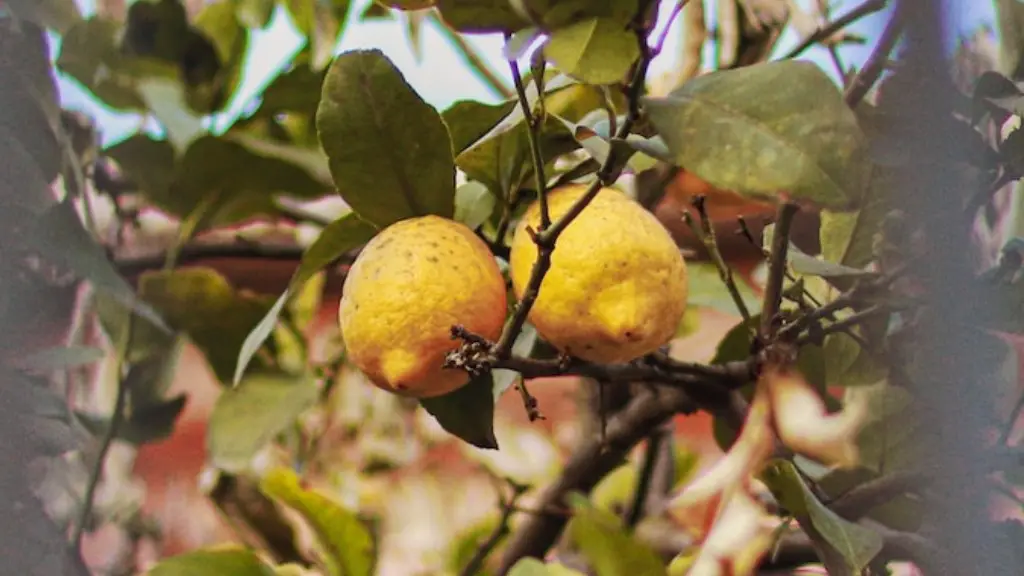Factors to Consider when Planting a Weeping Cherry Tree
Weeping cherry trees are prized for their grace and beauty, making them a popular choice among gardeners and landscapers alike. With a few tips and considerations, planting a weeping cherry tree can be an exciting and rewarding experience.
Climate is one of the most important considerations when planting a weeping cherry tree. These trees need lots of direct sunlight in order to thrive, and they need the right temperature range to do so. When planting a weeping cherry tree, it’s important to ensure the location will stay cool during Autumn and Winter, and warm and humid during Spring and Summer.
Soil type should also be taken into consideration. Weeping cherry tree thrive in well-drained soil that is rich in organic matter. It’s also important to ensure the soil has a pH of around 6 – 7.5 for optimal growth.
The best time of year to plant a weeping cherry tree is in Spring or late Autumn. This allows the tree to become established during the spring and summer months before the winter cold sets in.
It’s important to remember to water the tree often but not too much. Too much water can cause root rot and weaken the tree. A good rule of thumb is to water the tree every 3 days during its first year, and after that the frequency can be decreased to twice a week. Weeping cherry trees also require fertilizer, so it’s important to invest in fertilizer that’s specifically formulated for fruit trees.
When it comes to planting the weeping cherry tree, it’s important to dig a wide enough hole. It should be twice as wide as the root ball, and make sure to dig down at least as deep as the root ball is high. This will give the tree plenty of room to grow and allows the roots to spread without any resistance.
Finally, it’s important to mulch the base of the tree to protect the roots and keep the soil temperature cool. Mulch should be applied a few inches thick to prevent weeds from growing around the tree and help retain moisture in the soil.
Caring for Weeping Cherry Trees
Regular pruning and maintenance of weeping cherry trees is essential for optimal health and growth. Pruning should be done during late winter or early spring. This is the time when the trees are dormant, and it will minimize the amount of stress on the tree. Pruning should be done to thin out the tree and keep it in a healthy shape and size.
When it comes to watering, it’s important to water the tree regularly throughout the year. Watering should increase during particularly hot and dry periods, and should be done deeply and evenly to ensure the roots receive plenty of water. Additionally, fertilizing the tree regularly is important to ensure a long and healthy life.
Weeping cherry trees are also susceptible to pests and diseases. The best way to minimize the risk of pests and diseases is to select plants of healthy stock, and provide adequate care and nutrition. Additionally, it’s important to check the tree regularly for any signs of disease or pests, and take appropriate action if necessary.
Planting Weeping Cherry Trees in Groups
Weeping cherry trees can be planted in groups for a more stunning effect. Planting more than one will also help with pollination, as it ensures each tree is being pollinated by different bees. The best way to plant a weeping cherry tree in a group is to plant it in a loose V-formation. This allows the trees to all receive an equal amount of sunlight and prevents crowding.
When it comes to spacing, the trees should be planted 3-5 feet apart, depending on their size and growth rate. Additionally, it’s important to make sure that the trees are spaced evenly within the group.
Weeping cherry trees are a stunning addition to an outdoor landscape, and although they do require special care, their beauty is worth it. With careful consideration, these trees can be successfully planted and enjoyed for many years to come.
Suggested Heights for Weeping Cherry Tree
Weeping cherry trees can be pruned to reach different heights, depending on the preference of the gardener. Generally, it is recommended to prune weeping cherry trees so that they reach a height of 8-10 feet. This height is optimal for visual appeal, as it allows the branches to hang gracefully without becoming too overpowering.
The branches should also be shaped evenly, with the central trunk and branches extending outwards in a balanced manner. When pruning and shaping, it’s important to be careful not to cut too deep and damage the central branches. Additionally, it’s important to remove any dead or broken branches right away to reduce the risk of infection.
By regularly pruning and maintaining a weeping cherry tree, it can be kept in a visually appealing shape and size. This allows the beauty of the tree to be enjoyed for many years to come.
Fertilizing and Feeding Weeping Cherry Trees
Weeping cherry trees are heavy feeders and require fertilizer for optimum growth. The best time to fertilize weeping cherry trees is in the spring and summer months, when the tree is actively growing. It’s important not to overfertilize, as this can damage the tree.
It’s also important to remember to feed the tree organic matter. This can be done in the form of compost or commercial fertilizer specifically designed for fruit trees. Organic matter helps to add essential nutrients to the soil and promote healthy growth. Additionally, it helps to retain moisture in the soil, which is essential for good growth.
Weeping cherry trees also require a great deal of water, and it’s important to provide them with water on a regular basis. Watering should be done deeply and evenly, and should be done at least twice a week during the dry months. To encourage healthy growth and flowering, it is recommended to water the tree two or three times a week during its first year.
Pruning Weeping Cherry Trees
Weeping cherry trees require regular pruning to keep them healthy and maintain their unique shape. Pruning should be done in late winter or early spring, when the tree is dormant. It’s also important to make sure that the pruning is done correctly, as improper pruning can damage the tree and make it vulnerable to pests and diseases.
The best way to prune a weeping cherry tree is to thin out the branches and remove any dead or broken branches. It’s also important to trim the ends of the branches to maintain the tree’s overall shape and size. Additionally, it’s important to remove any branch that is growing vertically, as this can lead to an unbalanced shape.
Lastly, it’s important to be careful not to prune too much. Pruning too deeply can shock the tree and leave it vulnerable to disease and pests, so it’s important to only trim away as much as necessary to maintain the desired shape and size.




